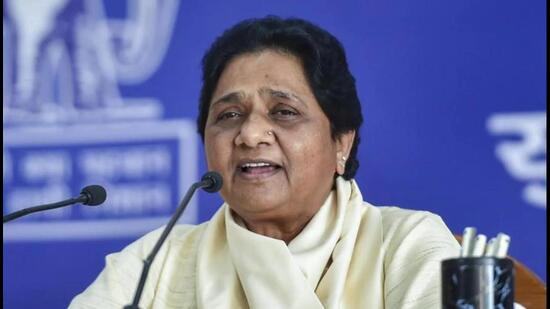UP elections: How the BSP lost political plot in coveted UP
The biggest beneficiary of the BSP’s declining influence among the SC voters in the post-2014 phase has been the BJP. It won 69 out of the 84 SC-reserved ACs in 2017 and has won 63 of them in 2022.
The Bahujan Samaj Party (BSP) will have just one MLA in newly elected assembly of Uttar Pradesh. Fifteen years ago, the party formed a majority government with 206 MLAs in the state, winning a vote share of 30.4%. It has managed a vote share of just 12.7% in these elections.

How did the BSP lose the political plot in Uttar Pradesh?
An HT analysis of past election statistics in Uttar Pradesh shows that it is a classic case of falling between two stools. After having won power on its own in 2007 with a shrewd social alliance of its core voters among the Scheduled Caste (SC) groups and the upper caste groups, the BSP’s electoral strategy seems to have been to compromise its core social-political agenda of Ambedkarite politics in a drive to field winnable candidates from other social groups while taking its own base for granted.
A simple comparison of the BSP’s performance in SC-reserved and general assembly constituencies (ACs) highlights this. The BSP first made its entry into the Uttar Pradesh assembly in the 1989 assembly elections. Its strength increased in every assembly election since 1989 until 2007 except in the 1991 elections. During this entire phase, the BSP’s seat share in SC-reserved ACs was always higher than its seat share in general ACs. In India, constituencies which are reserved for SC-ST candidates have a higher population share of these groups compared to unreserved ACs. This suggests that in its ascendant phase, the BSP enjoyed a greater popularity among the Dalit population of the state and also had a wider Dalit leadership in place in the form of its MLAs.
This changed from the 2012 elections, when the BSP’s seat share in SC-reserved ACs fell below its seat share in general ACs. In the newly elected assembly, the BSP’s lone MLA is from a general AC.

The biggest beneficiary of the BSP’s declining influence among the SC voters in the post-2014 phase has been the BJP. It won 69 out of the 84 SC-reserved ACs in 2017 and has won 63 of them in 2022. Community-wise projections from the Axis My India exit poll survey – their overall vote shares are not very different from the actual numbers – shows that the BJP has actually managed to attract not just the non-Jatav SC vote, but also a significant section of the Jatavs, the Dalit sub-caste which is believed to be the core support base of the BSP.

To be sure, there is a difference between the political appeal of the BSP during its phase of political ascendancy and the BJP in the post-2014 period to the Dalit voter in Uttar Pradesh. While the BSP increased its support on the promise of dignity and social empowerment of its core constituency, the BJP has largely banked on its welfare benefits to the Dalits, who also happen to be the poorest in not just Uttar Pradesh but most parts of the country. Ironical as it sounds, the BJP’s success in muting social contradictions between the socially deprived and dominant sections of the Hindu population is something the BSP also wanted to achieve when Mayawati was in power in Uttar Pradesh.





